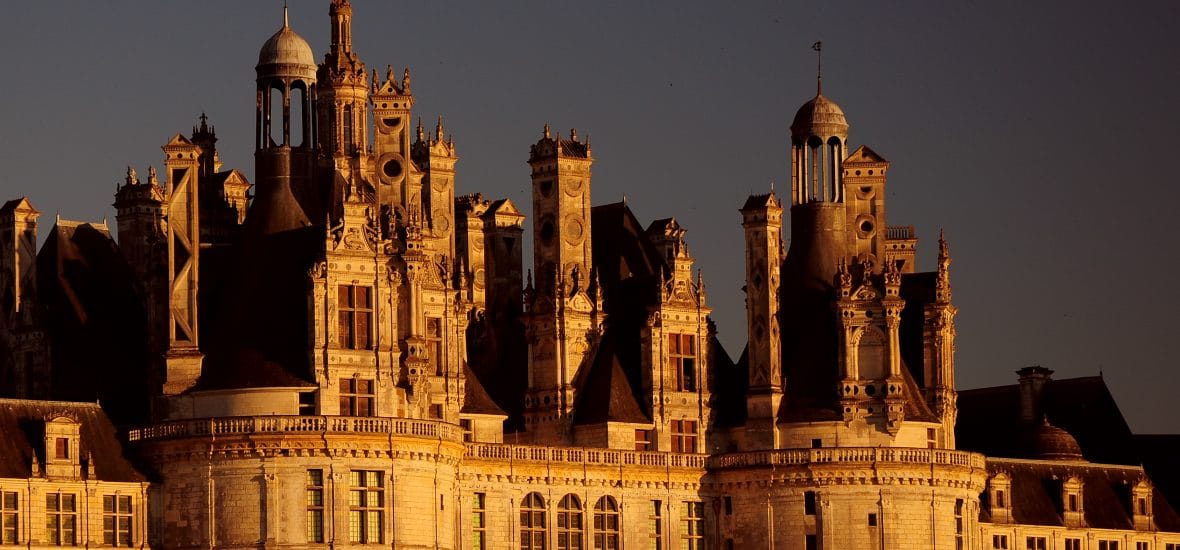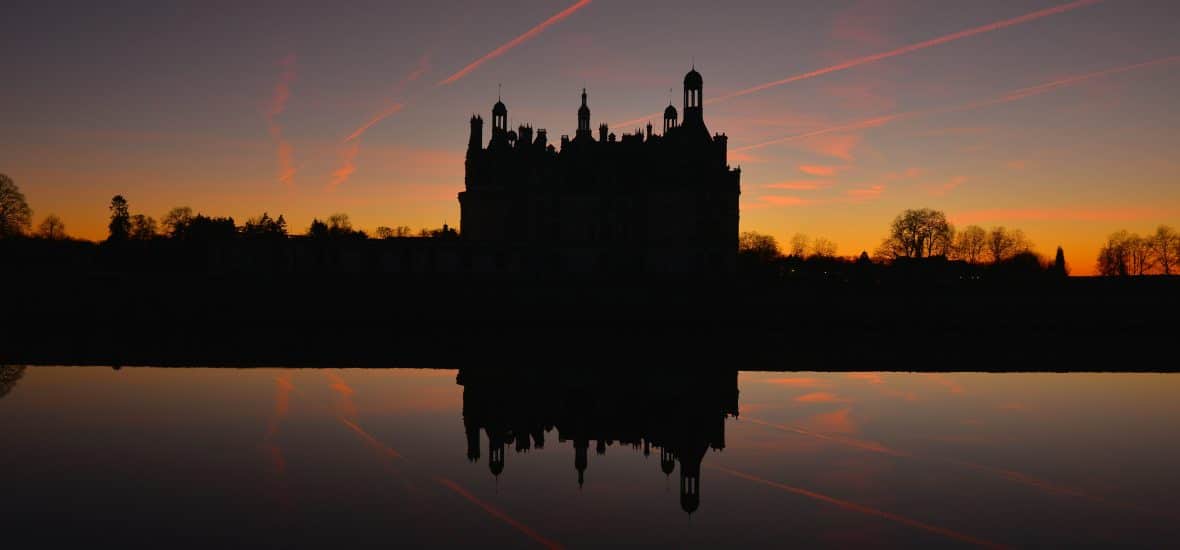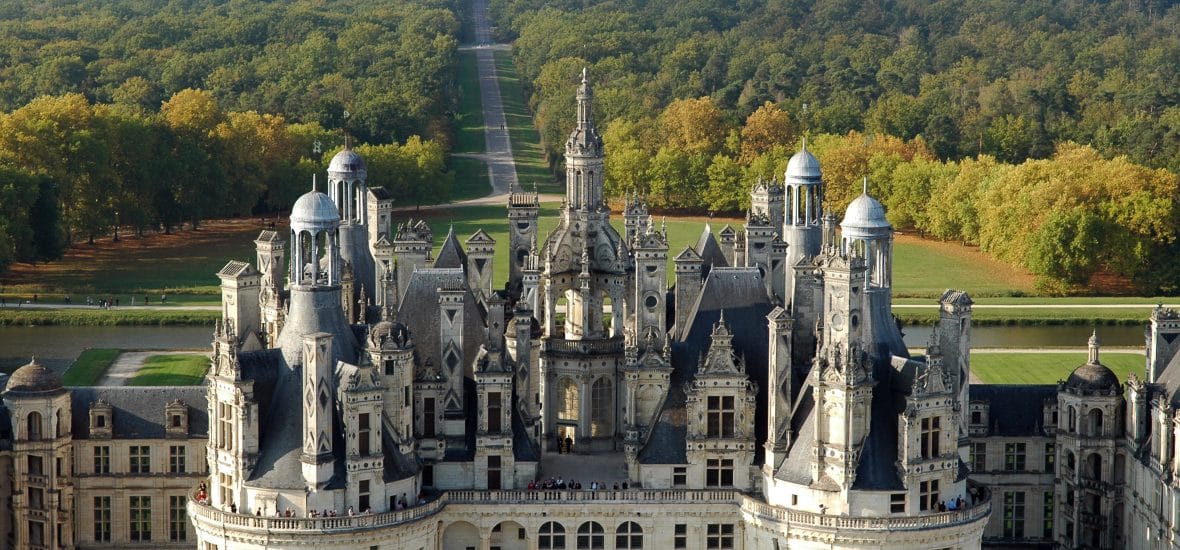


A palace rises up from the heart of the Sologne marshlands. A dashing young king, François I, has ordered its construction. The château of Chambord is not designed as a permanent residence, and François only stays there for a few weeks. It is a remarkable architectural achievement that the king is proud to show to sovereigns and ambassadors as a symbol of his power engraved in stone. The plan of the castle and its decors stem from a central axis, the renowned double helix staircase, inspired by Leonardo da Vinci, an ascending spiral leading to a profusion of chimneys and sculpted capitals on the terraces.
Only under the reign of Louis XIV is construction finally completed. During the same epoch the areas surrounding the château take on shape and form. Stables are set up outside while the Cosson river, which meanders through the park, is partially canalized to sanitize the site. Several times, the Sun King resides in the monument in the company of his court; the royal sojourns are occasions for grandiose hunting parties and festive entertainment; it is in Chambord, in 1670, that Moliere presents the premiere of his celebrated comedy, Le Bourgeois Gentilhomme.
During the 18th century, work is finally undertaken to equip and decorate the château interior, which is used by Louis XV first to lodge his father-in-law Stanislas Leszczynski, king of Poland in exile from 1725 to 1733 and, much later, to accommodate Maurice of Saxe as a reward for his brilliant victory in the Battle of Fontenoy (1745). The need to bring warmth and comfort to the edifice leads its different occupants to permanently furnish the château and to adorn the apartments with woodwork, parquets, dummy ceilings and the private space of petits cabinets.
Chambord is relatively spared from the ravages of the French Revolution; while the château is ransacked and much of the furniture sold off, the monument itself escapes destruction. But it then endures an extended period of neglect; only in 1809 does Napoleon hand it over to Marshal Louis-Alexandre Berthier as a token of recognition for his services. But Berthier does little more than pass through, and soon, his widow requests permission to sell off the large and indifferently maintained mansion. In 1821, the entire estate of Chambord is offered through a nationwide fund-raising campaign to the Duke of Bordeaux, grandson of King Charles X, but ensuing political events force him into exile and prevent him from inhabiting the château, which he discovers only in 1871 on the occasion of a brief sojourn during which he writes out his celebrated “White Flag Manifesto” announcing his refusal of the French flag and thereby renouncing his right to inherit the French throne. That said and in spite of his geographical remoteness, the duke – who prefers to be known as the Count of Chambord – oversees maintenance of the château and its park. He has the estate administered by a steward, undertakes major restoration projects, and officially opens the château to the public. Following his death in 1883, the estate is inherited by his nephews the princes of Bourbon-Parma. Since 1930, the château and its park have been state property.
Due to the Austrian nationality of the Bourbon-Parma princes, in 1915 the estate of Chambord is placed into receivership by the French state, which in 1930 becomes its official proprietor by preemption in return for payment of compensation to the heirs of the Count of Chambord. The new owners decide to make the monument resemble as closely as possible its Renaissance ancestor by demolishing the Louis XIV attics that cap its lower enclosure, and it is in that form that today’s château exists. Management of Chambord is then assigned to several public offices and ministries, each one of which has authority over part of the estate. Later on, a wish to reunify the domain of François I leads the state to set up, by enactment of the law of 23 February 2005, a public Establishment of an industrial and commercial nature (EPIC) with a single direction and management unit. In 1840, the château of Chambord is registered on the first list of French historical monuments, as are the forest park and the wall in 1997. And since 1981, it has been inscribed on UNESCO’s world heritage list.